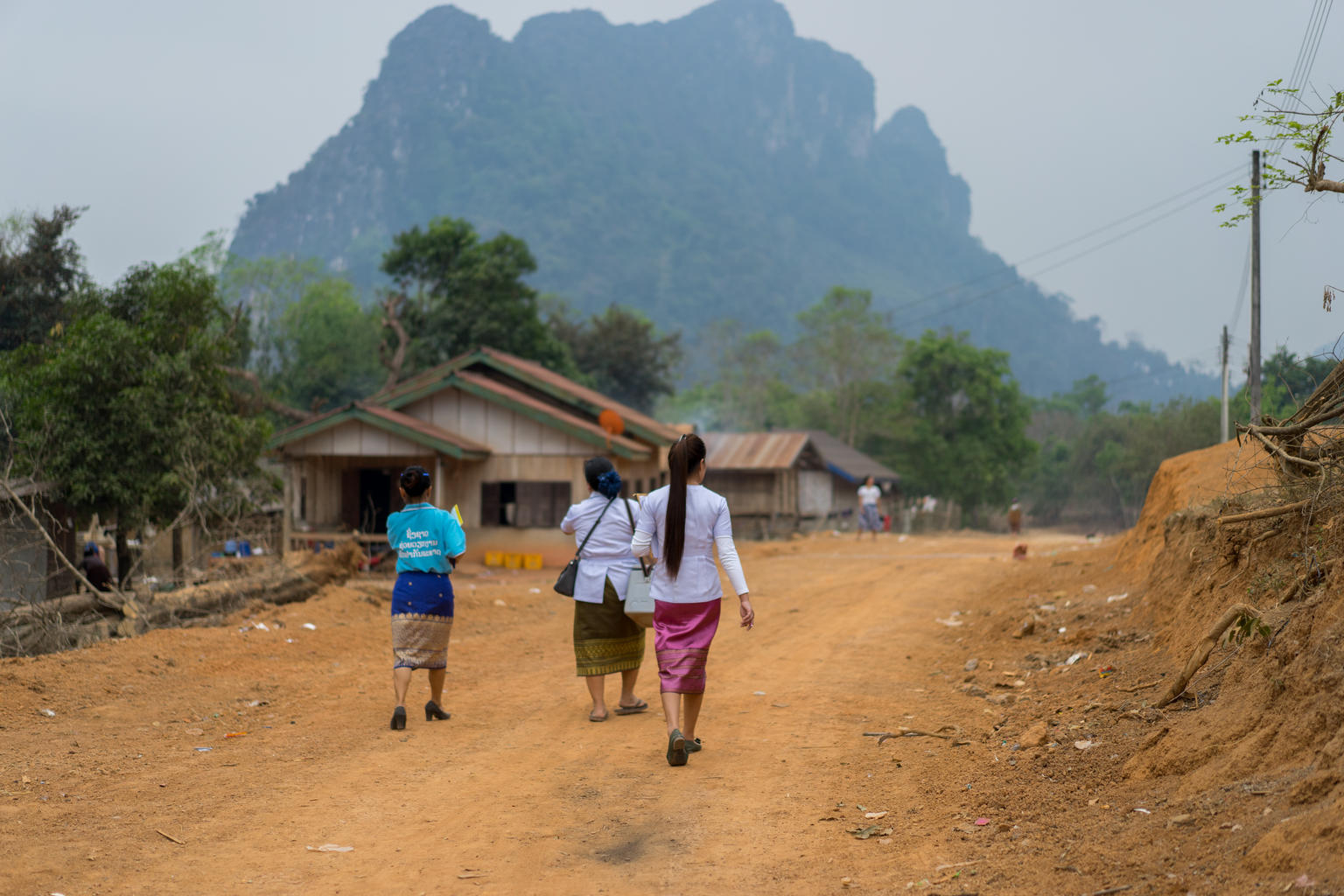No mountain too high: Ending polio in Laos
2018-05-11
© UNICEF/UN0198140/Nazer
Daeng Xayaseng and her health outreach team treks through a village in remote central Laos to find children who missed out on polio vaccinations.
For 15 years Daeng Xayaseng has been travelling by motorbike and on foot through rugged, undulating countryside to deliver vaccines to children in some of the most remote villages in Laos.
It’s hard work but she is determined to protect children. “We have a target of children to reach and we’ll achieve that no matter how long it takes,” she says. “We’ll keep working until we reach every child.”
Today her team visits Nam Poung village, four hours north of the capital Laos, to deliver polio vaccines.
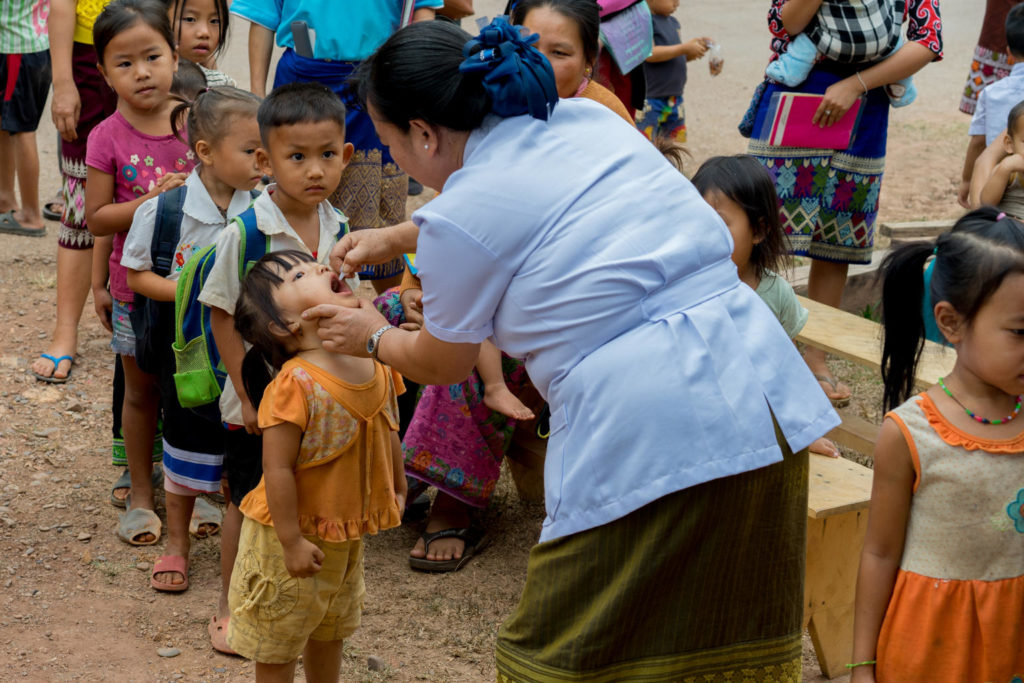
© UNICEF/UN0198144/Nazer
Children queue to be immunized against polio at a vaccination point in a Hmong village in Laos.
In 2015, 11 children and adults contracted a vaccine-derived polio virus. Tragically two children died.
Remote, poor and often ethnic communities such as those in this Hmong village are among the most vulnerable to the spread of disease and viruses. When dangerous viral outeaks occur, it’s important health teams come to those most in need of health services to contain the outeak.
“Service times depends on the season,” says Ms. Xayaseng. “It’s rice season right now. The villagers are all farmers so everyone will be working in the fields, a long way from their homes. That’s why our services depend on what the community asks; if they say 3 pm, we come at that time. If they say night time, we’ll be there.”
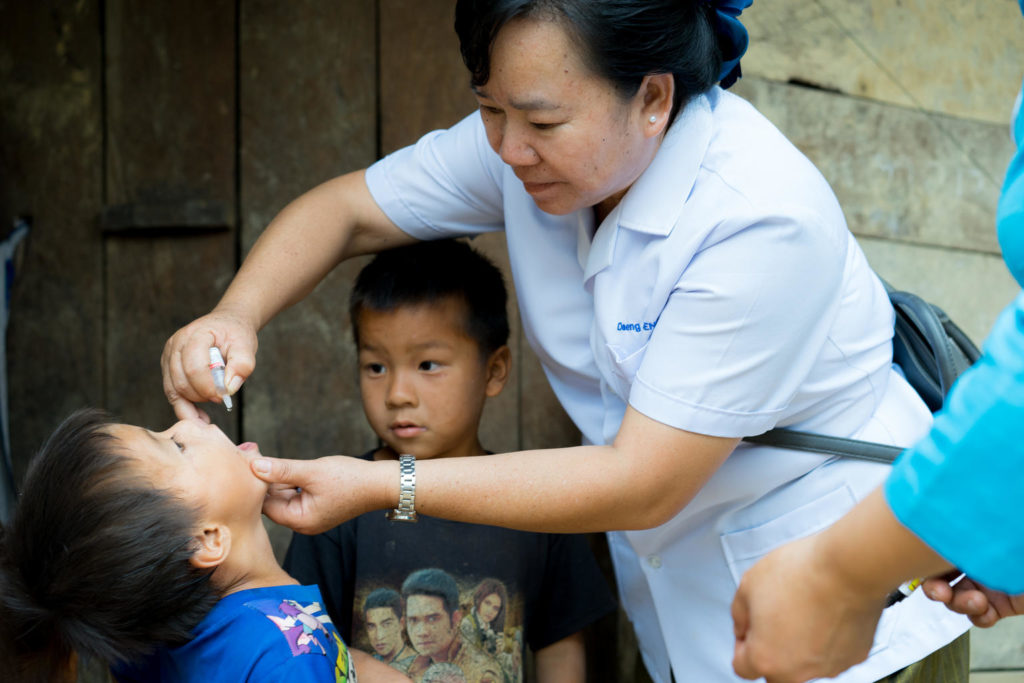
© UNICEF/UN0198142/Nazer
Two young boys are vaccinated outside their home. The boys did not come to be vaccinated and were instead found by the health outreach team looking for them in Nam Poung village, Laos.
The team first sets up a vaccination point at the centre of the village. Through booming loud speakers, the village chief speaks in the local Hmong language asking parents to ing their children to be immunized. Within a few minutes, parents arrive carrying small children in slings with larger children following quickly behind.
“For 15 years, I’ve been working on campaigns like this,” she says. “Today we’re here with our outreach team to vaccinate children against polio. We’ll also go house to house to make sure no child misses out.”
Once the team finishes at the vaccination point, they then go mobile and walk house to house to find children who did not come for immunization. If too few people within a given community are immunized, the risk of disease and deadly outeaks increases. This is what happened two years ago in nearby villages and led to tragedy.
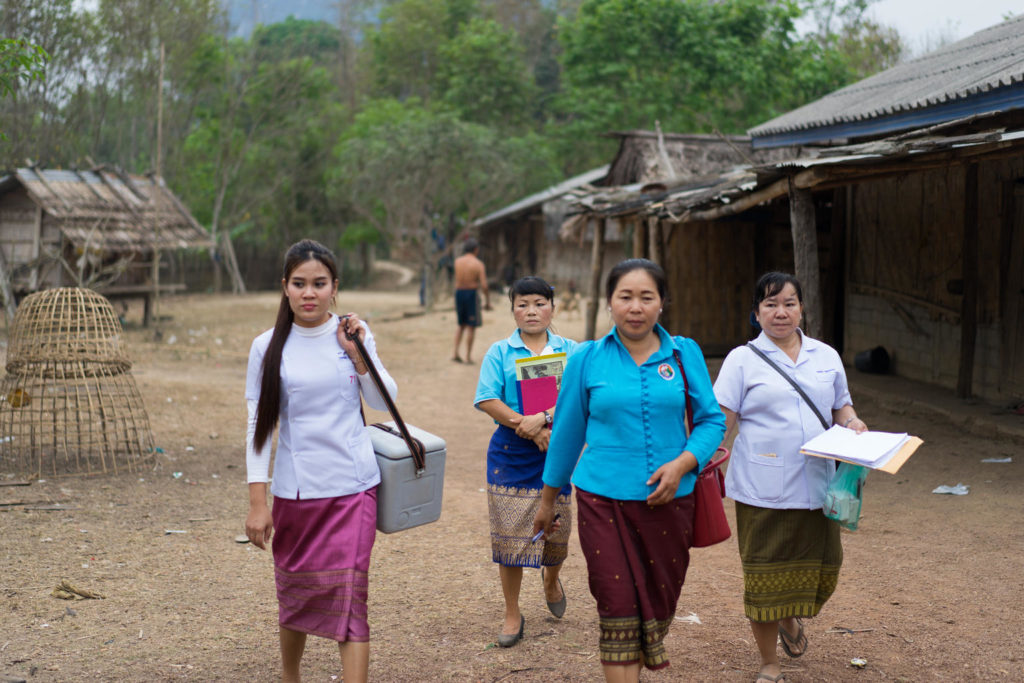
© UNICEF/UN0198137/Nazer
Daeng Xayaseng and her health outreach team finish for the day and walk back through the village in Laos, having vaccinated hundreds of children against polio and other preventable diseases.
Ms. Xayaseng and her team are determined to ensure such outeaks never happen again.
“We don’t want there to be another outeak of polio so we have to reach everyone,” says Ms. Xayaseng. “In order to do that, immunizing every child in remote communities like this is a priority to ensure everyone is protected.”
UNICEF, along with World Health Organization (WHO), is supporting the Lao Government to reach nearly half a million children under five with potentially life-saving vaccines. More than 7,200 volunteers and 1,400 health workers like Ms. Xayaseng and her team have been mobilised to deliver the oral polio vaccine as well as other vaccinations such as measles-rubella.
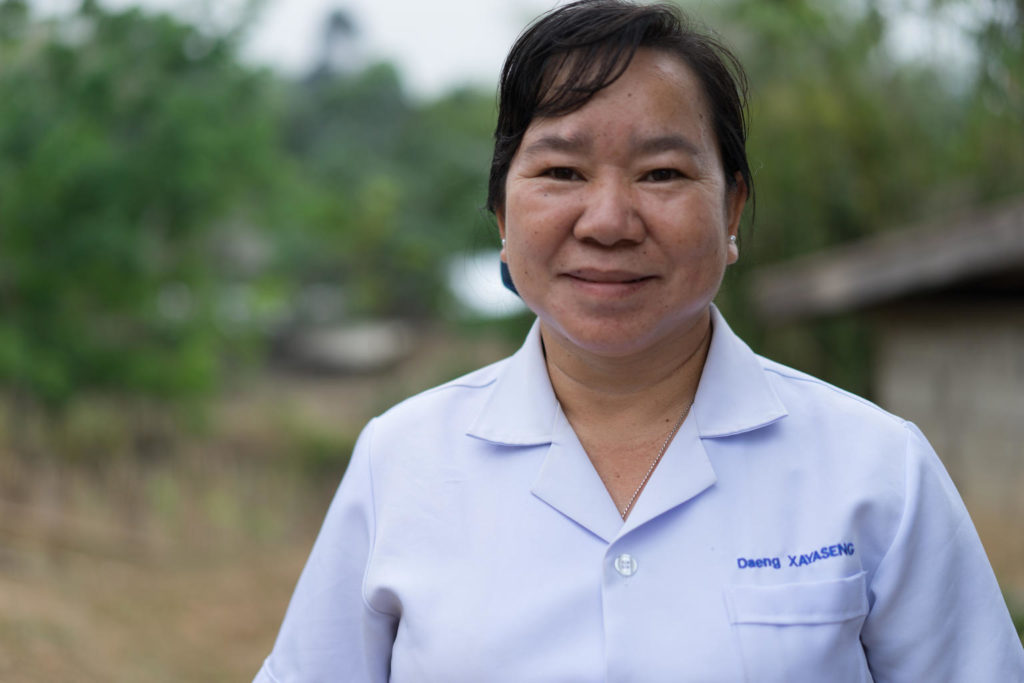
© UNICEF/UN0198136/Nazer
“I’m proud to do this job,” says Daeng Xayaseng (pictured).
After several hours, the work is complete.
“I’m very happy with my work,” says Ms. Xayaseng, once the team has packed up. “I’m proud to do this job to serve the community and help in any way I can.”
Simon Nazer is a UNICEF Communication Consultant based in Bangkok, Thailand.










